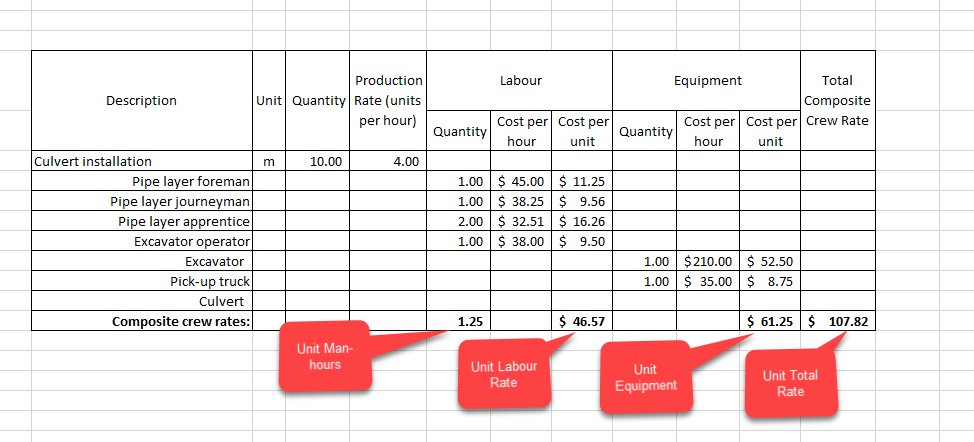What Are Composite Crew Rates
Detailed cost estimating best practice for determining labour and construction equipment costs is determining composite crew rates. The composite crew rates are the averages weighted to account for: labour and equipment costs and units per activity/task unit of measure.
Let’s say we want to determine the costs of culvert installation. We want to consider the activity to include the trench excavation, culvert pipe laying and trench backfill.
The picture below shows the crew composition, production rate, manhours per unit, composite crew labour and equipment rates and the total composite crew rate.

Using the rates above, we will calculate the total item crew and man-hours, item labour and equipment costs. It looks simple enough, but this is not the case if we do not have access to a reliable database. And even when we have a solid database, we still need to pay attention to the data we compare. For benchmarking costs, for example, using the total composite crew rate is satisfactory. To develop the cost estimate, though, we need more insight. We need the crew composition.
The Challenges We Most Often Face Are:
- How to determine the crew composition,
- How to determine whether it would be more appropriate to use the crew for pricing at the composite activity level or simple task,
- How to determine the most realistic production rate,
- How to benchmark composite crew rates against existing actual cost data.
- How to convert the cost estimate into the project budget to reflect the actual crew composition.
Construction companies’ labour and equipment costs are at the top of the cost overruns. Using careful cost estimating and project budgeting will reduce the risk of the project being over budget.
Join the Conversation!
What is your experience with composite crew unit rates? Do you use composite crew unit rates for cost estimating? Please use the comments section below to leave a message.





